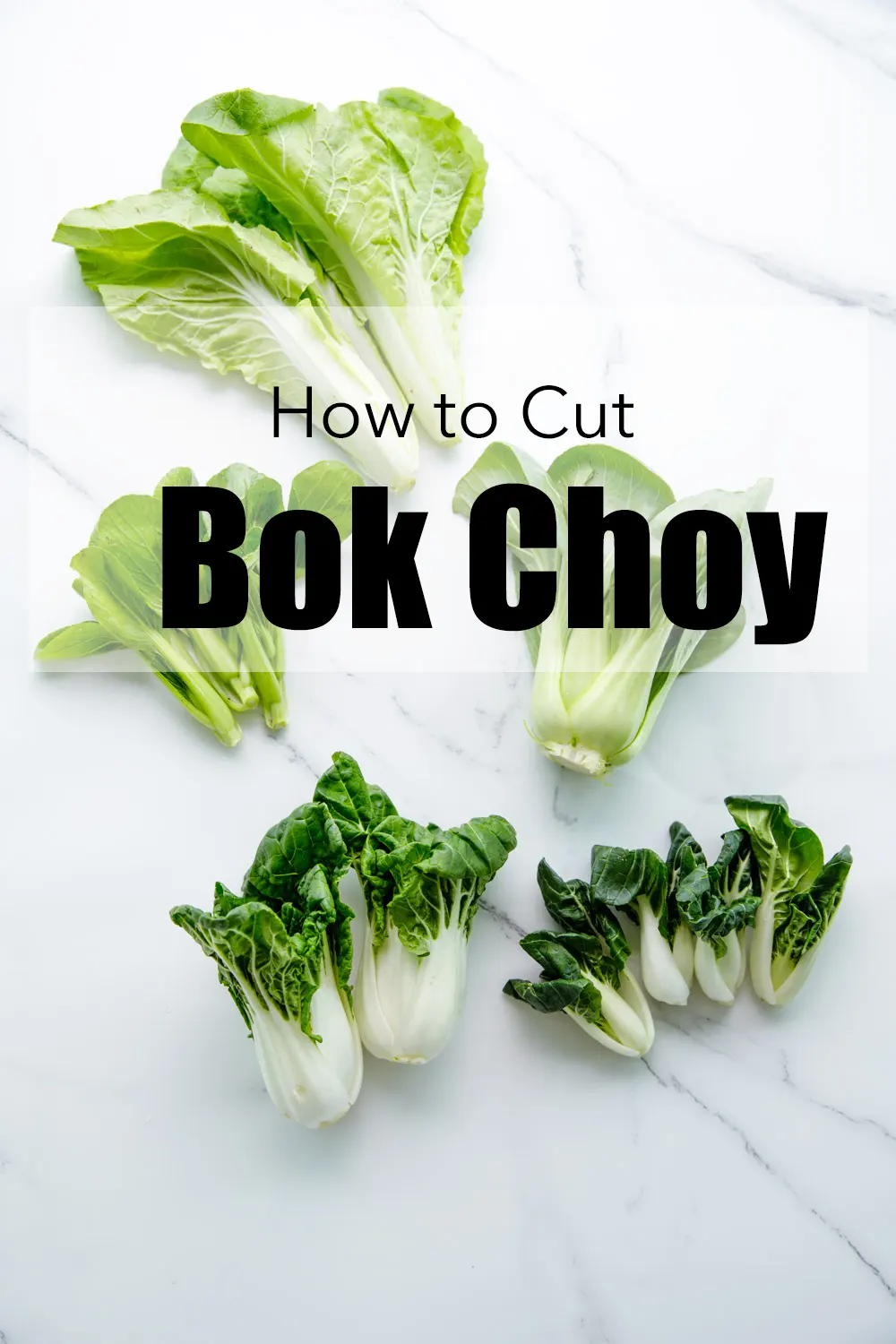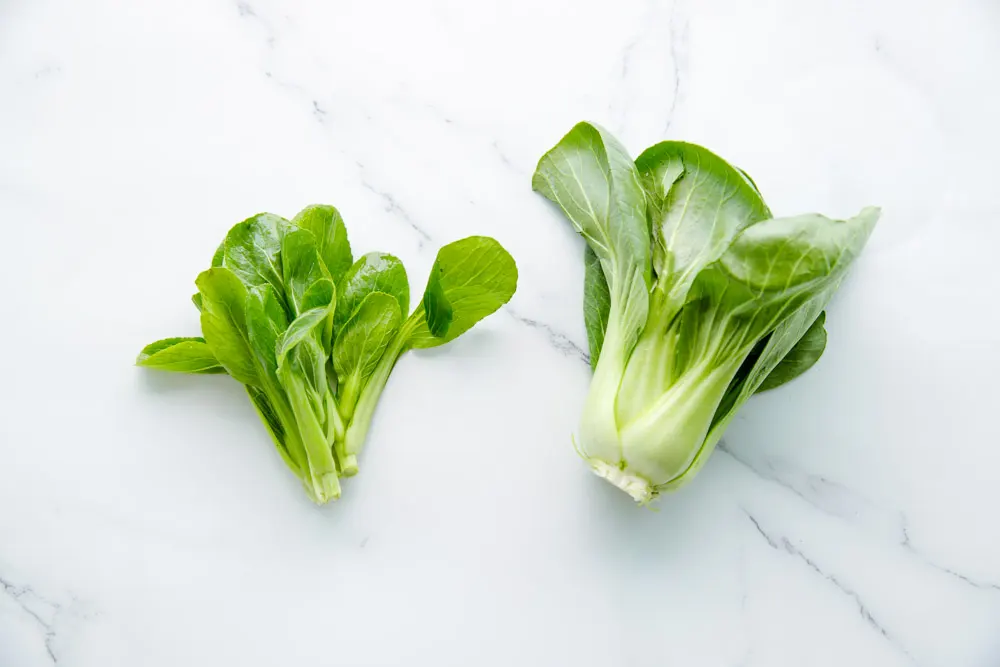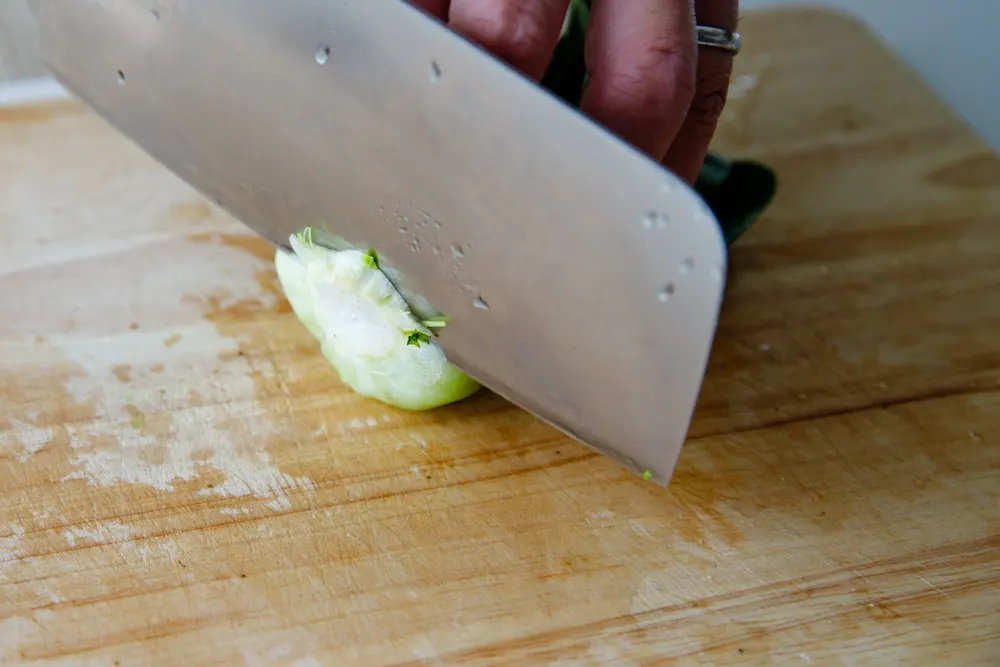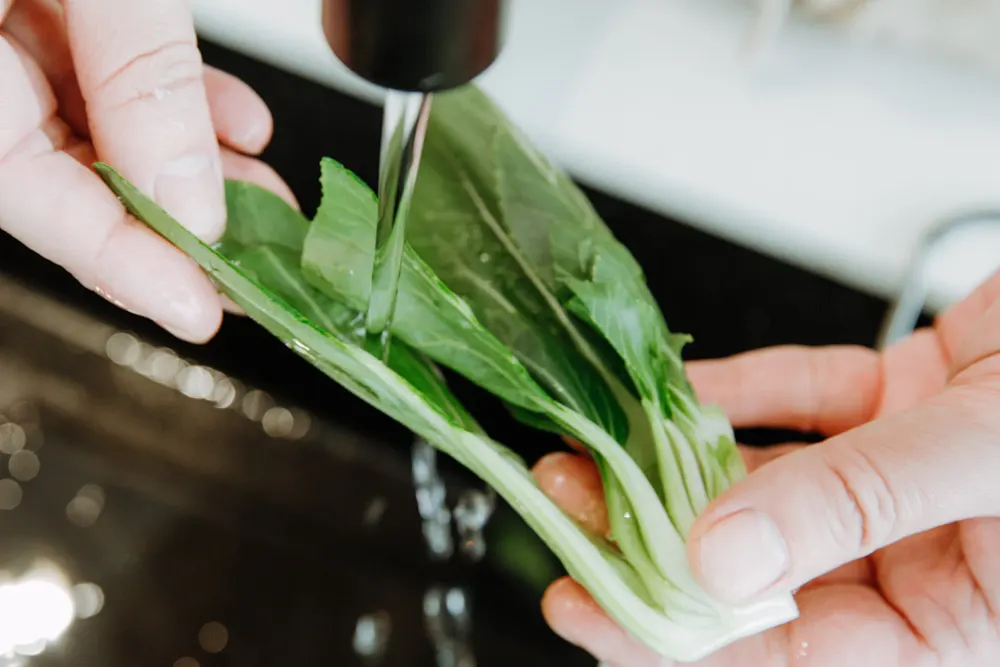Bok choy is a widely loved vegetable that can be cooked in many ways. Do you know that you need to differ the ways of cutting and preparing bok choy based on the cooking method? Let’s find the basics about bok choy, how to prepare it, and how to cut bok choy for various dishes, stir-frying dishes, soups, salads, and ramen.

What’s Bok Choy
Bok choy, also known as Chinese cabbage, is a delicious and nutritious vegetable that can be cooked in multiple ways. It has white stems with dark green leaves.
Different sizes of Bok Choy
Before we start talking about the way to cut bok choy, let me explain that the cutting method might differ based on how large the bok choy is, in addition to the cooking methods.
If you buy bok choy in the market, you may find large (“10-11” height), middle (“9” height), or small ones (“4-5” height). We make different treatments based on sizes. All sizes of bok choy can be good for stir-frying. Baby ones are better for salad.

How to cut bok choy
Let’s find out the ways one by one.
How to cut bok choy for stir-frying
For all stir-frying recipes, you can either cut them into halves or quarters based on the size of the bok choy. Or cut into smaller single pieces. Let’s go through it one by one.
- How to cut baby bok choy in halves: Trim the root if necessary but don’t cut too much to keep the leaves attached. Take a bok choy and slice it lengthwise in one direction to halve the bok choy.
- To cut middle-size bok choy into quarters: Slice the halved bok choy lengthwise into halves first and then one more time to make 4 separate quarters. You can further cut the large pieces into smaller ones.
- Single smaller pieces: If the bok choy contains lots of solids or is quite large in size, you will need to trim the stems, then slice it in half lengthwise, and then chop across the bok choy.
How to chop bok choy
In some of the recipes like bok choy rice, you may need to chop bok choy. Follow the steps to chop the bok choy:
Chopping bok choy is quite simple. Here are the steps:
- Cut off the stem: cut off and discard stems. For larger bok choy, cut off a 2 cm.
- The leaves will be separated at this stage, then place the leaves on a cutting board, layered one by one. Cut them lengthwise first. Then chop both of the stems and leaves into small pieces.
How to cut bok choy for ramen and soups
I love to use bok choy for soups, either in wonton soup, reman soup, or a basic tofu bok choy soup. We have discussed the techniques, now let’s make the decisions.
My favorite way of cutting bok choy for wonton soup and ramen soup is to cut it into quarters or simply separate the leaves. Because in this case, it can work better as decoration as whole pieces.
However, if you need to combine it into some fine soups like west lake beef soup or similar hot and sour soup, chopping it into smaller pieces is a better idea.
How to clean bok choy after cutting
After the cutting process, you will still need to clean them before cooking. Follow the steps and make sure the bok choy is well-cleaned and prepared. The cleaning method is also depending on the cutting process.

- For Halved and quartered bok choy, rinse them under running water and separate the stalks to clean the dirt among the layers. Then soak in clean water for around 10 minutes. Drain completely before cooking.

- For sliced or pieced bok choy, cut them first and then wash them in clean water 2 or 3 times. Drain completely before cooking.
Tips for cleaning: be gentle and wash them forcefully. Otherwise, the texture might be spoiled.
Bok Choy Purchasing and Storage Tips
- You need to choose fresh, unwilted bok choy with no spots on the stem.
- When bok choy is bought fresh from the store, it is important to refrigerate and consume it within the first few days so that you don’t risk consuming any wilted bok choy.
- Additionally, if you want to lengthen the storage time, you can wrap bok choy loosely in a paper towel so there is some airflow around it and no moisture accumulates inside the package or bag.
- All cooked bok choy dishes should be finished in a single meal. Don’t keep the leftovers.
Note: If you purchase bok choy with black spots or yellow spots on it, don’t worry, it is still safe to eat.
FAQs
Both the stem and leaves are edible. If you get older stems, just trim them a little bit.
The white stem of bok choy is quite crunchy and is super popular for stir-fries. The green leaves are much softer like just other dark green vegetables.
It is believed to be super beneficial to the human body. Bok Choy is super low in calories and fat. One single cup is approximately just 9 calories – making it suitable for those on weight-management diets. It is packed with vitamins A and C. Eating bok choy regularly can have positive impacts on your digestive cardiovascular and overall health.
Afterthoughts
Bok choy is a healthy vegetable that can be cut into halves, quarters or single leaves, or even small pieces. The cutting method is very much depending on the dish you are going to cook, the size of the purchased bok choy, and the condition of the vegetable. Hope you will enjoy it and make more creations based on this lovely vegetable.
